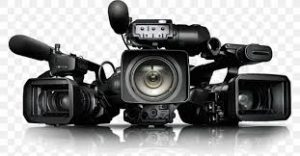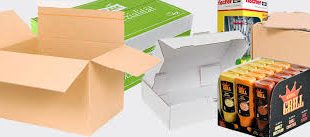Learning how to use a camera properly is the most important aspect of improving a photographer’s skills. Composition, lighting and post-processing on a computer have a big impact on the quality of the photo, but still they are second on the list of priority skills. The main thing is the camera.
Click here : High Quality Images
Professional photographer Ugo spoke about one elegant trick that he uses to teach his clients how to study the camera better: take a brown paper bag, put the camera in it, and blindly, without looking at it, adjust the ISO, shutter speed and aperture to the desired values. If you can do this, then you already know your tool enough and can move on (it goes without saying that you also need to clearly understand how these basic settings work).
Making mistakes is part of the learning process, and the sooner you come across them, the better. Let’s look at some of the most common mistakes in camera settings and see how to fix them.
1 error: use auto camera mode
Naturally, the use of automatic camera mode will not add you a better understanding of its basic settings. This mode is great if your only goal is to take home pictures of your family vacation. But if you are serious about developing your photography skills, please do not use it!
Automatic mode is a mode in which the camera itself selects all the settings. The problem is that this mode does not allow you to get a very high-quality image. The camera selects settings that provide optimal exposure (i.e., the image is not too bright and not too dark). It seems to sound good, but the problem is that the camera does not take into account factors such as noise / grain and depth of field. Here the camera will try to choose such a shutter speed value, i.e. a shutter speed that is fast enough to avoid camera shake.
Further, the aperture and ISO are adjusted depending on how fast the shutter speed should be. If shooting in a darkened environment, the automation will most likely select an open aperture and increase ISO. Although this will not be the optimal setting. Try to do it all better by hand, so that you know exactly how these settings will affect the final image.
2 error: use an excessively high ISO value
Another common mistake is to use an excessively high ISO value. An ISO number controls the sensitivity of your camera’s sensor to the amount of light. The higher the ISO value, the higher the photosensitivity and the more noise you have in the photo, so in most situations you should keep the ISO as low as possible. Increasing this setting allows you to use a shorter shutter speed, but at the same time will lead to noise in the image. This is fine if you need a quick shutter speed, but you should be aware of the consequences.
Try to keep your ISO at 100 as much as possible. In situations where you are not using a tripod , start adjusting the ISO only when it becomes noticeably darker or when the shutter speed is too slow to get a sharp enough “handheld” picture. Then gradually increase the ISO until you return to such an exposure time that is fast enough (as a rule, you should not take it “with your hands” at a shutter speed slower than 1 / focal length of the lens).
In situations where you are forced (or prefer) to use slow shutter speed, mount the camera on a tripod and continue to use the “native” ISO camera, which for most cameras is 100.
3 error: use too slow shutter speed
This leads us to a third often-made mistake: using exposure time that is too long for handheld photography.
Although image stabilization systems are getting better and better every year, and some camera models are capable of supporting shutter speeds of up to one second for handheld photography, but this is not exactly what users usually have in their photo bags.
Despite using a 14 mm lens, the shutter speed of 1/20 second was too slow and resulted in a less sharp image
You will not be able to get a very clear image when taking pictures “with your hands” with a slow shutter speed, and the minimum shutter speed depends on which lens you are using . Again, photographers use the “1 / focal length” formula when photographing “handheld”, that is, no slower than 1/50 second by 50 mm or 1/20 second by 20 mm.
However, even when using a shutter speed of 1/20 second and a 20 mm lens, some camera shake may occur. When previewing, make sure the image comes out crisp.
4 error: forget about manual / auto focus
The fourth mistake is one of those that can be made by experienced masters and beginners. Photographers often recommend using manual camera focus if you use a tripod and Live View (real-time preview function) when shooting. Manual focus has several advantages, but it’s easy to forget to switch back to auto focus later.
Using manual focus when taking photographs with your hands can be difficult, so if you tend to switch between a tripod and the “manual” shooting method, double-check whether you use manual or automatic focus. It’s easy to think that you use the camera’s auto focus when it’s still set to manual (you will be very disappointed to see a bunch of defocused images …)
5 error: neglect white balance
Some people think that white balance doesn’t matter if you shoot in RAW, because it’s easy to fix in post-processing.
But experienced photographers prefer to get a photo in the camera as close as possible to the finished final image, and this includes setting the correct white balance. You can, indeed, make adjustments to the color balance during post-processing, but a good starting point is critical to this workflow.
White balance adjustment is especially important for night shots. When photographing stars (or, for example, the northern lights), white balance will be of great importance in the image. Using automatic white balance is likely to lead to the dominance of orange, and this will then be difficult to fix. In this situation, manual white balance is desired. Own white balance allows you to take a picture of a gray standard at a given lighting level and use it as a white balance for subsequent shots. In the camera settings, Kelvin mode allows you to choose the appropriate value from a wide range of color temperatures .
Comparison of Auto White Balance and Manual White Balance (Color Temperature 3100)
Lacking the right white balance can also confuse those of you who don’t spend a lot of time processing the image and prefer to get a good result right away. If you are familiar with this, we recommend that you study the Kelvin camera modes and find out which one looks best in various situations.
Conclusion
Don’t worry if you have already made any of the mistakes described – even your favorite photographers have made them too and may still do them sometimes!
The best way to learn is to simply continue to practice using the camera. You don’t even have to go outside to find out how the various settings work. Try different settings, shooting just in your own kitchen – you will still see what happens when you change the ISO, aperture, or shutter speed!
For more information visit our website ImagesMall.com
 Universal Bloggers
Universal Bloggers





